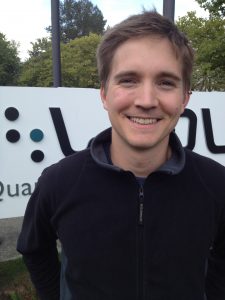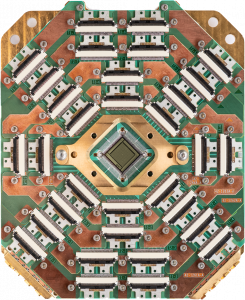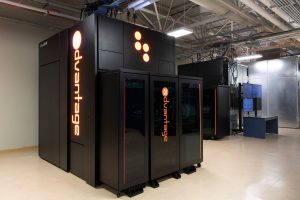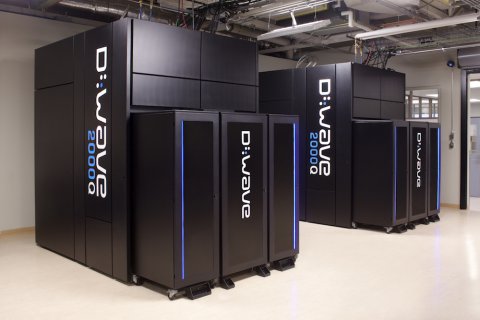
Applied Quantum, QC Ed, Net Optimization Gains, Classical vs Quantum, Hybrid Solvers and more . . .
Relevant to: Potential Customers, Workforce, Learners, Higher Ed

Technology
Q: How would you describe applied quantum, how D-Wave became focused on that, and how people can get started?

D-Wave has been focused on practical quantum computing since the company’s inception. In the early years it was simply about being able to build a real, usable quantum computer. Today, it’s about helping customers build applications using real data to solve real problems with real business impact. The problems our customers are solving, therefore, have evolved over the years and instead of devoting most of our team’s resources to determining how we build quantum systems, we are now more focused on exploring how we continue to improve the performance and scale of our systems so that businesses can benefit.
To help customers get started, we recently introduced a new jump-start program called D-Wave Launch. The program is for enterprises who are interested in developing hybrid quantum applications and could use additional support. In a nutshell, we help users identify the right problems (most often optimization problems) and then help them map the problem onto the quantum processor. Collaboration typically proceeds in four phases:
1) help discover which business challenges are best suited for D-Wave’s hybrid quantum service,
2) work with the customer team to build a proof-of-concept,
3) pilot the hybrid quantum application, and
4) put the hybrid quantum application into production.
Q: How would you describe the most “doable” applications for D-Wave’s system today? Are these uniquely tied to the “annealing” approach vs other methodologies?
Annealing systems — the model of D-Wave’s processors — are particularly well-suited for optimization problems, though they are capable of solving an array of NP-hard problems. Optimization problems are very widely applicable for a broad range of problem types and applications that have commercial value today. For example, it includes everything from optimizing manufacturing processes to retail operations or the allocation of hospital resources. For one example, Volkswagen used quantum computing to build an application that optimizes paint shop operations to reduce cost and waste.
Long-term, quantum computers — including our own — are capable of solving diverse types of problems. Today, quantum annealers are demonstrating business value across many practical optimization problems while outperforming other quantum platforms.
Q: How would you address skepticism about whether present generation quantum hardware is actually resulting in unique optimization gains?
There will always be skeptics, but the good news is that the science doesn’t align with that skepticism. D-Wave users are already seeing early advantages in using a D-Wave system over existing methods to solve complex business problems. There’s that business gain that companies are starting to see with quantum computing, and there is promising research we’re working on too.
We recently published a peer-reviewed paper in Nature Communications, marking a major milestone on the journey to quantum advantage. The new research uses a D-Wave lower noise system to demonstrate a 3 million times speed-up over classical alternatives in a real-world problem. This is the first time a speed-up of this kind — with scaling advantages in both temperature and size — has been demonstrated on a practically valuable problem with implications for the real world. While we’re not claiming quantum advantage, it’s a major milestone in that it underscores D-Wave’s commitment to practical value even when advancing the theory and science behind quantum computing.

Q: While quantum technology is continuing to advance, many in the industry are providing hybrid systems. For D-Wave, how would you articulate the proportion/ratio/role of quantum algorithms vs classical hardware vs quantum hardware in finding a solution?
The exact ratio of processor usage depends on what each particular problem requires. Part of the beauty of hybrid quantum-classical applications is that both types of systems have complementary strengths that benefit the application. I write about this in more detail here, but an essential part of the hybrid application process is to deconstruct the problem. Put simply, you must find solutions to your problem by calling on the different strengths of both quantum and classical computing resources.
Part of what makes our D-Wave Hybrid Solver Service powerful is that it provides a workflow (called Kerberos) that coordinates the work between the CPU and the quantum computer for users to find optimal solutions. Customers can then use that framework to optimize a hybrid workflow best-suited for their particular problem.
An important point to make here is that quantum applications will always and only be hybrid. Hybrid is not a concession or the best solution “for now”; it’s a best practice. An analogy that I like to use is air travel. Jets completely transformed our ability to travel the world, opening a new paradigm of human experience. But we still utilize ground travel to get us to the airport. We may very well be using quantum applications to solve difficult problems in production every day, but we’ll still utilize classical systems like laptops or familiar programming languages.
Customer Focused Questions:
Q: Is there a customer base for practical quantum computing? What are the industries whose problems align best with today’s quantum technological capabilities? How should a company get started?
The simple answer is yes. In a recently published 451 Report, 81% of Fortune 1000 decision-makers have a quantum computing use-case in mind for the next three years. Most of those were looking at driving increased efficiencies and profitability within their companies. The survey found that business leaders believe quantum computing is uniquely positioned to solve complex optimization and efficiency problems for businesses today. Many different problems are in fact optimization problems, and the industries of financial services, manufacturing, logistics and pharma/life sciences are all engaging with the quantum computing ecosystem to develop applications.
One of our partners, Multiverse Computing, published a paper on how quantum annealing is especially useful in calculating equilibrium market values of institutions after a shock and forecasting financial crashes. They say that annealing can provide a potentially more efficient way to assess financial equilibrium and predict financial crashes than the current systems in place. They’re already working with banks like Bankia and BBVA to demonstrate quantum annealing’s value and power with real-world financial problems. Other companies have been working on manufacturing and logistics management applications GE Research has built a logistics management application that can ultimately help with preventive maintenance and scheduling repairs for their equipment, while DENSO a leading supplier of advanced automotive technology, systems, and components developed a proof-of-concept aimed at optimizing control of automated guided vehicles on their factory floors.
Additional applications include:
- Protein design pioneer Menten AI has developed the first process using hybrid quantum programs to determine protein structure for de novo protein design with very encouraging results often outperforming classical solvers. Menten AI’s unique protein designs have been computationally validated, chemically synthesized, and are being advanced to live-virus testing against COVID-19. See more in this video.
- Western Canadian grocery retailer Save-On-Foods is using hybrid quantum algorithms to bring grocery optimization solutions to their business, with pilot tests underway. The company has been able to reduce the time an important optimization task takes from 25 hours to a mere 2 minutes of calculations each week. Even more important than the reduction in time is the ability to optimize performance across and between a significant number of business parameters in a way that is challenging using traditional methods. See more in this video.
- Accenture, a leading global professional services company, is exploring quantum, quantum-inspired, and hybrid solutions to develop applications across industries. Accenture recently conducted a series of business experiments with a banking client to pilot quantum applications for currency arbitrage, credit scoring, and trading optimization, successfully mapping computationally challenging business problems to quantum formulations, enabling quantum readiness.
- Volkswagen, an early adopter of D-Wave’s annealing quantum computer, has expanded its quantum use cases with the hybrid solver service to build a paint shop scheduling application. The algorithm is designed to optimize the order in which cars are being painted. By using the hybrid solver service, the number of color switches will be reduced significantly, leading to performance improvements. See more in this video.
Q: Are there programs that you recommend for start-ups who want to engage with practical quantum computing? What kind of opportunities and resources exist in the quantum space for those looking to learn + engage?
That’s a great question. We’re engaged with many different organizations helping start-ups think about quantum and begin developing their own applications. The Creative Destruction Lab (CDL) in Toronto has a quantum focus and our CEO Alan Baratz serves as a mentor for start-ups looking to engage with the quantum ecosystem. Through the CDL we have worked with companies looking at sustainability applications, agriculture industry, financial services, health care and so much more.
For those wanting to learn more, we also provide training courses and resources to help organizations get started with quantum and we work with academic institutions around the world to reach the next generation of students, entrepreneurs, and researchers.
Workforce/QC Ed
Q: What is your advice for students, researchers and quantum computing enthusiasts who want to start in the industry? Can people without deep physics/CS backgrounds get engaged in quantum computing today?
My advice to students and developers is simple: start now. You don’t have to be a theoretical physics student to engage with the quantum computing ecosystem. Computer scientists, data scientists, mathematicians, physicists and even business optimization programmers can all get started today by signing up for a free minute of time on the Leap quantum cloud service. Ask your university what their quantum strategy is and look at the R&D for the technology as well as for the ability to develop near term applications for today. There are government funded and education programs around the globe which are focused on building a basis of understanding of the capabilities of the technology and we know those students today will be the ones who will help to build the future ecosystem. Maybe they become developers and develop applications, maybe they become teachers and continue to provide education for future generations, maybe they go into the commercial workforce and bring quantum into their company for the first time. We know that it requires curious individuals and organizations to ask questions and push the boundaries of what’s possible.
For D-Wave, it’s about helping businesses and developers learn they can start coding on a quantum computer today. Quantum literacy has to be an industry-wide effort to build familiarity with various forms of quantum computing and programming languages. From D-Wave’s cloud service Leap, to other innovations on the market, the industry is merging common languages with new tools to enable developers of all levels to get their heads in the game.

Plus, access has come a long way in recent years. Just a few years ago, most developers and students couldn’t use a quantum computer unless they worked for a small set of companies or were conducting advanced research. But affordable – and even free – cloud access is giving the next generation of developers and businesses the keys to building quantum applications that have real-world, practical value. New developer tools, greater access, and continued professional networking are powering a thriving community of quantum developers that can leverage their talent to impact business priorities today.
Q: What advice do you have for academia for building curriculum around quantum?
We’re proud to work with academic institutions around the globe on curriculum. First and foremost, you need to build curriculum that encompasses the entire ecosystem. For hardware, there must be programs on chip design and cryogenics. For software, there needs to be application development programs. And for the customer base, there must be a focus on the practical side of quantum technology — what it can do today and how it can be applied to business-scale problems. We have supported hackathons to help with this, but cross-academic engagements — in which physics and computer science students work with the business optimization students — will be critical as we move forward so both disciplines can see how theory works or doesn’t work in real world settings. Long-term, this type of interdisciplinary work could produce an open-source library of information and resources for future students to tap into and build upon.
If you found this article to be informative, you can explore more current quantum news here, exclusives, interviews, and podcasts.


















